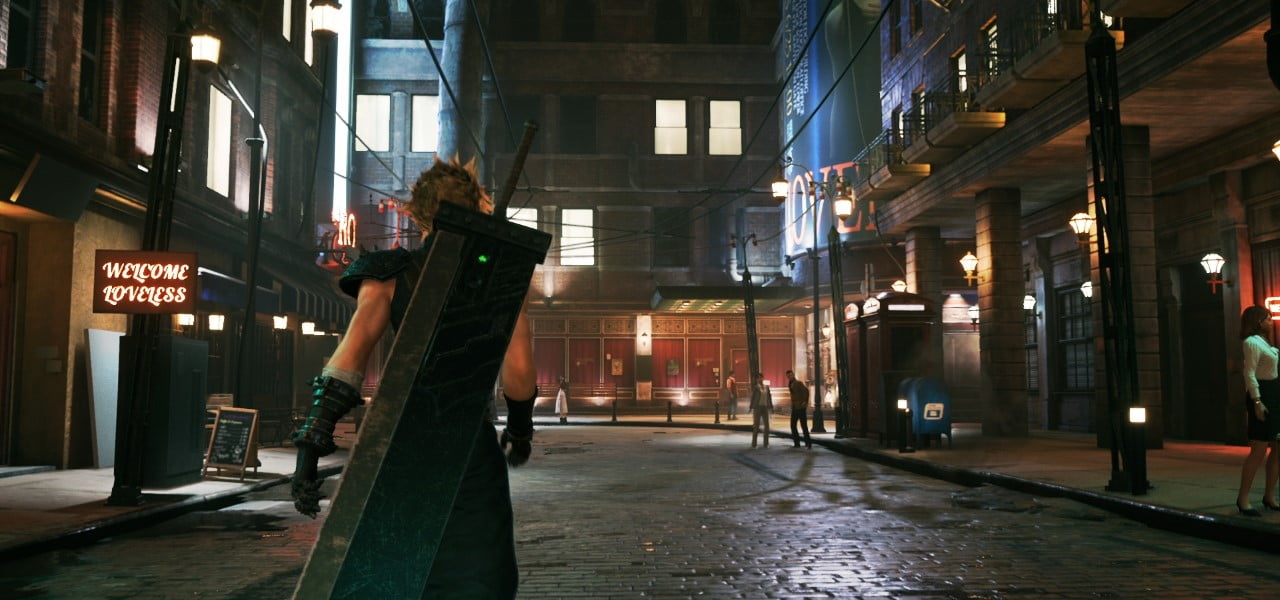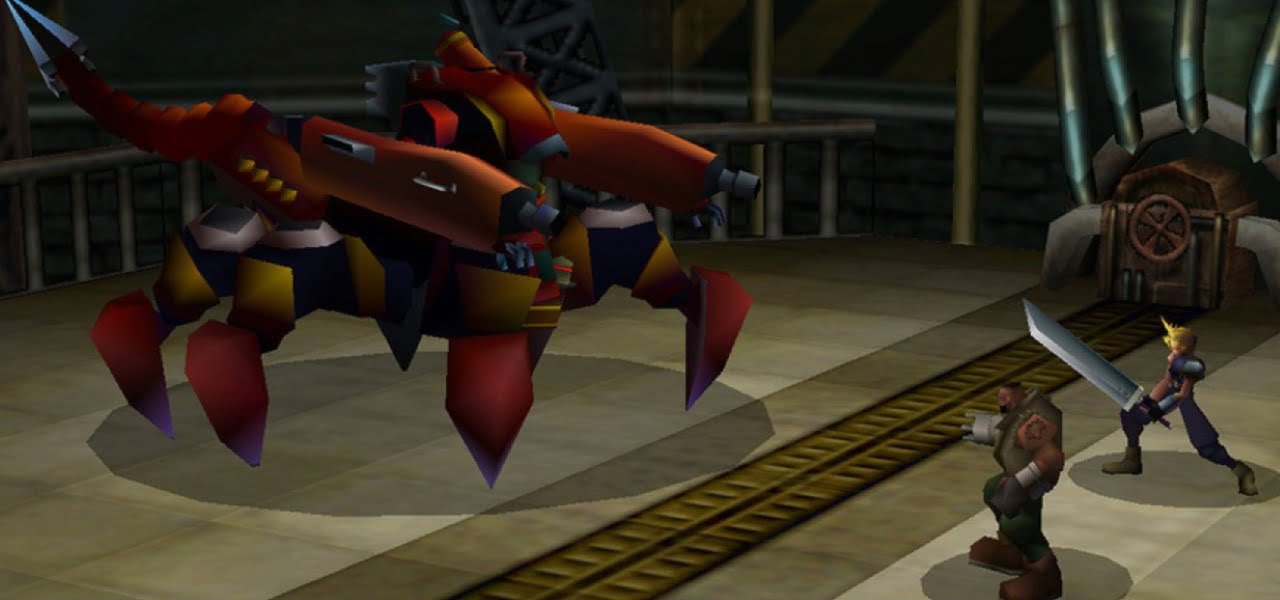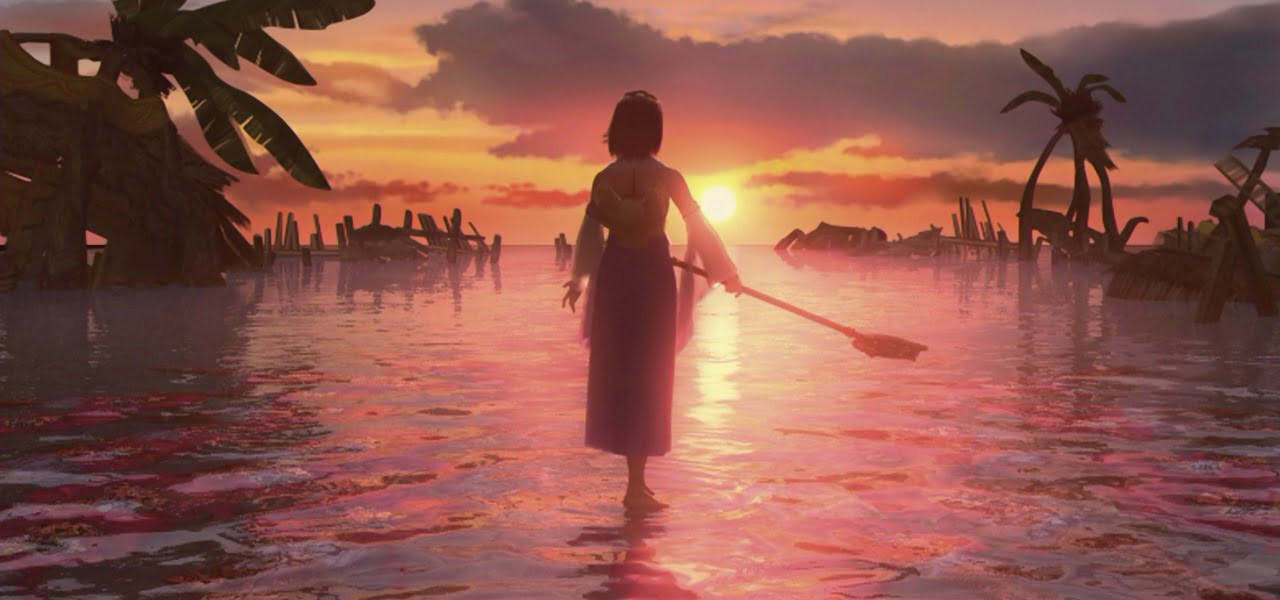The Final Fantasy VII Remake is a magpie of ideas, pilfering the best bits of four generations of 3D RPGs. (And that’s precisely why it works so well.)
Remaking Final Fantasy VII, the beloved PlayStation roleplaying game from 1997, is an unenviable task. It’s almost a zero-sum game, where the best you can hope for is not to besmirch the memory of a classic. And the worst? Well, it rolls downhill from there.
Then there’s the logistics of how you actually do it.
Luckily, Square Enix has had the visual template sorted for years, at least. Gone are the super-deformed homunculi of the original, replaced with the ultra-high resolution characters from the Anthology of Final Fantasy VII, from the PSP prequel, Crisis Core, to the aftermath CGI movie, Advent Children. It’s astonishing to think that the realtime-rendered, gameplay graphics of the Final Fantasy VII Remake are superior to a pre-rendered movie.

There’s no need for “not in-game footage” disclaimers on trailers for the Final Fantasy VII Remake, that’s for sure.
That astonishing increase in detail doesn’t just apply to the visuals. It also shows in the scale of the environments and the scope of the game’s story. It’s hard to understand how a seven-hour stretch of the original game could translate into a 30-hour remake until you experience it for yourself. Then every segment of the story, with some details fleshed out and other gaps filled in, is given lashings of care and attention.
On the mechanical front, however, things become trickier. Compared to modern gameplay sensibilities, the original Final Fantasy VII – with its side-on, semi turn-based combat – feels more like massive ships firing cannons at one another broadside until someone sinks. That’s not a criticism. I unironically love classic J-RPGs. But general tastes have changed and Final Fantasy as a series has changed, too.
Over the years, Square Enix has picked up a few tricks. Its development teams have learned what works and – at great cost as games were cancelled, delayed, and repurposed into something new – what doesn’t work.
This shared experience, from different development teams across two decades of RPGs, is woven into the fabric of the Final Fantasy VII Remake. The game works so well because the magpies behind it have stolen all the best bits from other Final Fantasy games. It’s like a supercut of the best systems, all killer, no filler.
But which bits of the previous games have been begged, borrowed, and stolen to make the mechanical mosaic in the Final Fantasy VII Remake?
Final Fantasy VII (1997)

Duh. Obviously the biggest influence on the Final Fantasy VII Remake is the original game it reimagines. Let’s do a totally non-exhaustive, whistlestop tour of the key bits:
- The setting (Midgar, of course, but the rest of the world will follow in subsequent parts)
- The storyline (generally, though with more fleshing out to suit the extended runtime)
- The goofy (yet charming) dialogue
- The characters
- The monsters
- The really bonkers enemy designs (you know the ones)
- The (even more bonkers) sidequests and minigames
- The weapons and equipment
- The Materia system (for magic)
- The ATB system (in a fashion)
- The Limit Break system (even if some of the limits themselves are a little different)
That’s quite a comprehensive list for a game that many – Thumbsticks included – worried wouldn’t be faithful to the original. You can’t pinch ideas from the game you’re remaking, though. That’s just, er, remaking it. That’s where the rest of the series comes in.
Final Fantasy VIII (1999)
The Final Fantasy VII Remake doesn’t borrow all that many ideas from the eighth instalment in the series, but the one it does – the idea of fighting summon monsters to recruit them – is a good one. It makes for some impressive boss-level battles outside of the regular story flow. (Even if it does mean you have to spend more time talking to Chadley, the insufferable wiener.)
Final Fantasy IX (2000)
Like the game that preceded it chronologically, it’s only a small mechanic that’s pilfered from Final Fantasy IX. In the ninth instalment, characters can use abilities of weapons only when they’re equipped. But if you use the weapon for long enough and build up enough experience with it – that’s Ability Points in IX, or Proficiency in VII Remake – you can permanently learn the ability and continue to use it, even if you no longer equip the weapon.
Final Fantasy X (2001)

We can’t think of anything in the Final Fantasy VII Remake that’s borrowed from Final Fantasy X. Sorry, Blitzball fans.
Final Fantasy XII (2006)
The final PS2-era Final Fantasy game was a big departure for the series. It didn’t feature a traditional overworld map, which felt weird. Its Gambit “programming” system was interesting, if a bit flawed. But most importantly, it introduced a system for additional side-quests that would feel more at home in an MMO or a Bethesda game than a J-RPG. Final Fantasy XII features a series of hubs, complete with factions and radiant quests, which you’ll find replicated in the expanded slum areas of the Final Fantasy VII Remake.
Final Fantasy XIII (2009)
Final Fantasy XIII is not looked upon fondly by most fans of the series. Yes, it gets better once it opens up from a series of interconnected corridors, but most people got bored before then. And yes, it’s very pretty, but it’s also fatuous and overblown.
But there’s one key system from Final Fantasy XIII that’s been stolen by the Final Fantasy VII Remake: the Stagger system. If you hit an enemy with enough damage in a short period of time, particularly if you target its weaknesses, it will be stunned. This makes it more vulnerable to damage and will stop it from fighting back. You’ve got the 13th instalment to thank for that system.
Oh, and the weapon upgrade system in VII Remake looks remarkably like the character upgrade system in XIII.
Final Fantasy XV (2016)

We were all worried about Final Fantasy XV: Crusin’ With the Boys, especially given that it was built out of an abandoned Final Fantasy XIII sequel. But like the Final Fantasy VII Remake, it actually turned out pretty great.
The recent remake borrows a lot from Final Fantasy XV: Lads on Tour, but it’s not all entirely unique. That’s perhaps a sign of the iteration that went into that game, as well. The questing system is a further expansion on Final Fantasy XII’s, but spread across a large, open world. It also features a Stagger system, but it’s more based on defence than attack. These ideas weren’t born in XV, but they were developed upon further in the Final Fantasy VII Remake.
But it’s the action-based combat, with the ability to leverage different character abilities and playstyles, that’s the biggest bridge between the two games.
The summoning system – where summon monsters dramatically “arrive” towards the later stages of particularly difficult battles, like the arrival of Gandalf at Helm’s Deep – is also featured in the Final Fantasy VII Remake. Giant godlike monsters arriving to save you is a very literal interpretation of deus ex machina – if anything, it’s a bit on the nose – but it works.
Bonus: Kingdom Hearts
Depending on who you’re playing as in the Final Fantasy VII Remake, it changes the feel of the combat. If you’ve got Barret or Aerith selected, for instance, then it plays more like Final Fantasy XV, with a simple, press-and-hold to attack. And if you’re playing as Cloud? It’s just like Kingdom Hearts.
But instead of hitting things with a massive key, it’s a massive sword. Po-tay-to, po-tah-to.
You can follow Thumbsticks on Flipboard, Facebook, Google News, and Twitter for all the latest features.






